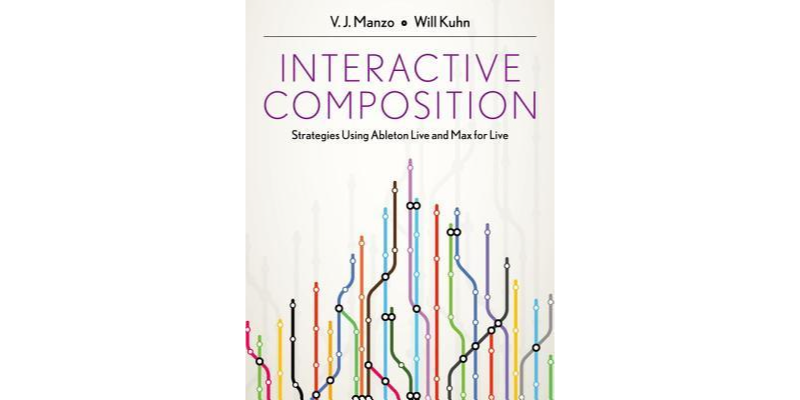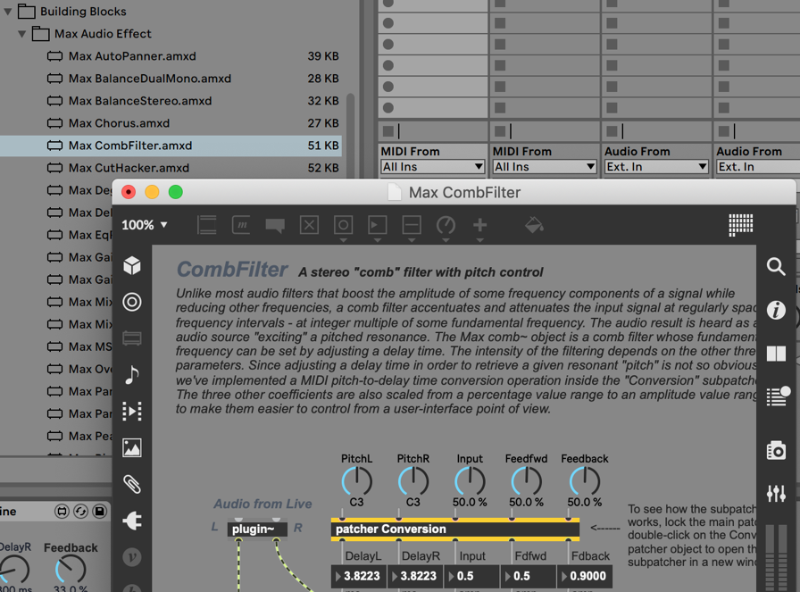The Max for Live Resource Kit
Programming with Max for Live can be a rewarding practice, but learning to translate your ideas into devices can seem complicated. In addition to understanding your Ableton Live-based production needs, you also need to gain expertise in Max programming, and learn the peculiarities of interfacing Max with the Live environment.
Having a project that you want to build is helpful – it can keep you focused while you are learning the system. But having some outside information can jumpstart your programming efforts and inspire you along the way. Let’s take a look at some of our favorite Max for Live resources, tools and examples.
Interactive Composition
We start with a book: Interactive Composition: Strategies Using Ableton Live and Max for Live, by V.J. Manzo and Will Kuhn. Manzo and Kuhn take a very musical approach to unpacking Ableton Live and Max for Live, keeping things lively by hopping across a variety of musical styles. It becomes especially interesting when it presents Max for Live programming techniques as tools supporting these styles, like building your own chiptune instrument.

This approach has several advantages: it gets you used to translating musical goals into practical patches, and you end up developing a significant library of hand-built devices. It also exposes many of the practical questions that come up for anyone working on ‘creative code’.
In exploring some genres (like hip hop and dubstep), the book focuses more on Ableton Live production techniques than Max for Live coding. But if you want to take a holistic approach to learning both Live and Max, this book provides a fun and creative way to get into it all.
Step By Step
Our next resource is also a book – and one that we’ve discussed plenty. It’s Step by Step: Adventures in Sequencing with Max/MSP, by Gregory Taylor. This is very different from the Manzo/Kuhn book. Rather than exploring a wide range of tools and styles, it does a deep dive into a single conceptual tool: the step sequencer.

Gregory’s extensive experience with Max helps distill hard-won lessons into robust tools, exposing the reader to important concepts like code reuse and solid musical timing. While the book’s content isn’t specific to Max for Live, device creation is covered, and core Max concepts (flexible timing systems, user-interface options and data routing) will be useful in any time- or sequence-oriented device you create.
Building Tools
Another resource we’ve previously discussed bears repeating: the Max for Live Building Tools Pack available from the Ableton site. This one pack provides an extraordinary collection of examples, lessons and reusable code widgets.

This pack deserves an article of its own – which is exactly what we did back in March of 2018. These patches and examples have been around since Max for Live was first released, and continue to provide best-of-breed examples for creating audio and MIDI effects, synth and sample instruments, and tools for controlling the Live environment. It takes some of the lessons learned in the Step by Step book and makes them concrete, presenting new programmers with code that can be easily copied and pasted to create a wide variety of super-practical devices.
Programming in Max For Live
Another ‘classic’ is the Programming in Max for Live video series, created by Tom Hall back in 2012. This is a start-from-scratch runthrough of designing several Max for Live devices, and connecting them with the Live environment.
These videos, available on the Cycling '74 YouTube channel, cover the gamut of Max for Live programming practices, including management of parameter ranges, UI layout, object naming and object visibility. Tom’s approach is direct and easy to follow, and focuses on using classic objects to create a wide range of devices.
While some of the UI elements may have changed since the series was made, you can use some of the previous resources to iron out any updates that might be needed.
M4L Production Guidelines
After going through all of these resources, you may be brimming with ideas for new devices – including ones that you might want to share with others. Our friends at Ableton have developed a series of guidelines (shared on maxforlive.com) that can help ensure that your devices are stable and usable.

This document brings together key style tips under a single umbrella, so that your parameters are well-annotated and recallable within a saved Live set. Often, not knowing these best practices limits a developer’s ability to share. So, if you want your devices to have the polish and professionalism that you find in devices by people like Max for Cats, Amazing Noises and K-Devices, following these guidelines can help you get there.
We hope that these resources can help both focus your efforts and broaden your range of influences. If you have other ideas for Max for Live programming resources that should be shared, please leave them in the comments below.
And Happy Patching!
by dan derks on September 27, 2019

